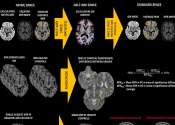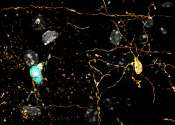Early cortical remyelination has a neuroprotective effect in multiple sclerosis, study shows
Multiple sclerosis is a heterogeneous disease whose manifestations vary considerably from patient to patient and whose course appears, on the surface, unpredictable. Hence, it is crucial to identify the factors that drive ...
Apr 2, 2024
0
197









